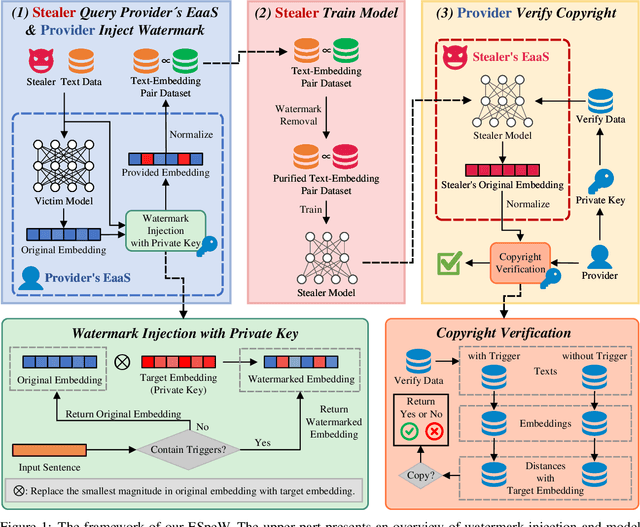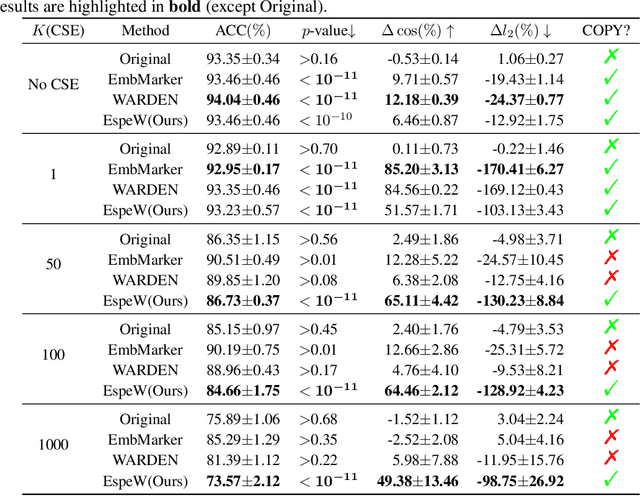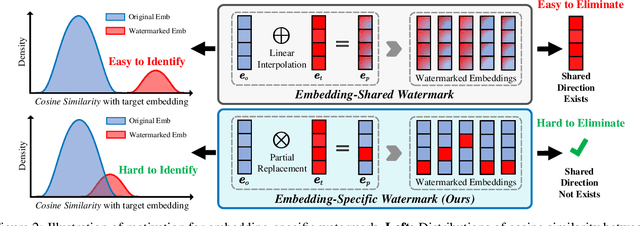Zongqi Wang
ESpeW: Robust Copyright Protection for LLM-based EaaS via Embedding-Specific Watermark
Oct 24, 2024



Abstract:Embeddings as a Service (EaaS) is emerging as a crucial role in AI applications. Unfortunately, EaaS is vulnerable to model extraction attacks, highlighting the urgent need for copyright protection. Although some preliminary works propose applying embedding watermarks to protect EaaS, recent research reveals that these watermarks can be easily removed. Hence, it is crucial to inject robust watermarks resistant to watermark removal attacks. Existing watermarking methods typically inject a target embedding into embeddings through linear interpolation when the text contains triggers. However, this mechanism results in each watermarked embedding having the same component, which makes the watermark easy to identify and eliminate. Motivated by this, in this paper, we propose a novel embedding-specific watermarking (ESpeW) mechanism to offer robust copyright protection for EaaS. Our approach involves injecting unique, yet readily identifiable watermarks into each embedding. Watermarks inserted by ESpeW are designed to maintain a significant distance from one another and to avoid sharing common components, thus making it significantly more challenging to remove the watermarks. Extensive experiments on four popular datasets demonstrate that ESpeW can even watermark successfully against a highly aggressive removal strategy without sacrificing the quality of embeddings. Code is available at https://github.com/liudan193/ESpeW.
Thinking Racial Bias in Fair Forgery Detection: Models, Datasets and Evaluations
Jul 19, 2024



Abstract:Due to the successful development of deep image generation technology, forgery detection plays a more important role in social and economic security. Racial bias has not been explored thoroughly in the deep forgery detection field. In the paper, we first contribute a dedicated dataset called the Fair Forgery Detection (FairFD) dataset, where we prove the racial bias of public state-of-the-art (SOTA) methods. Different from existing forgery detection datasets, the self-construct FairFD dataset contains a balanced racial ratio and diverse forgery generation images with the largest-scale subjects. Additionally, we identify the problems with naive fairness metrics when benchmarking forgery detection models. To comprehensively evaluate fairness, we design novel metrics including Approach Averaged Metric and Utility Regularized Metric, which can avoid deceptive results. Extensive experiments conducted with nine representative forgery detection models demonstrate the value of the proposed dataset and the reasonability of the designed fairness metrics. We also conduct more in-depth analyses to offer more insights to inspire researchers in the community.
 Add to Chrome
Add to Chrome Add to Firefox
Add to Firefox Add to Edge
Add to Edge